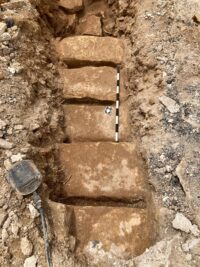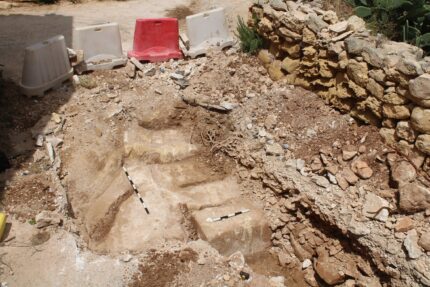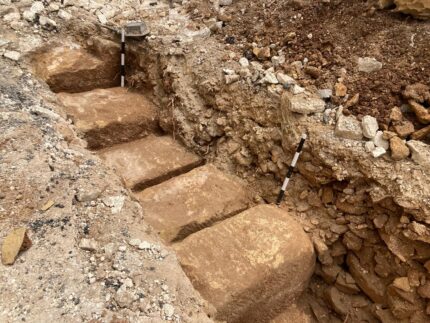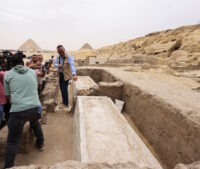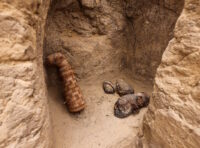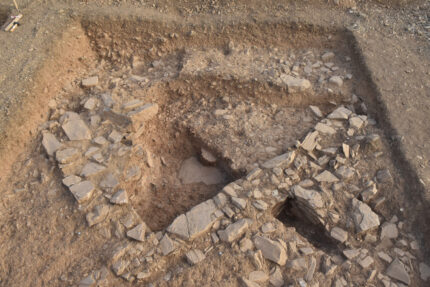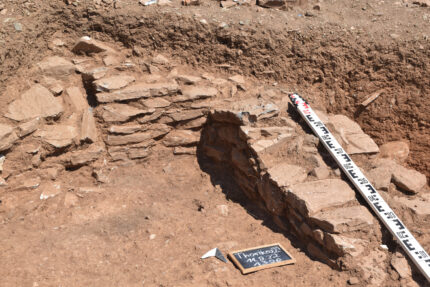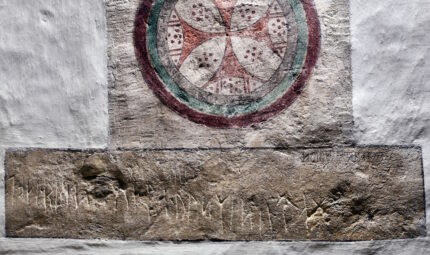 An inscription in both runic and Latin script on the wall of the Sønder Asmindrup Church near Holbæk on the eastern Danish island of Zealand has been identified as a legally valid proof of debt from 800 years ago.
An inscription in both runic and Latin script on the wall of the Sønder Asmindrup Church near Holbæk on the eastern Danish island of Zealand has been identified as a legally valid proof of debt from 800 years ago.
The inscription consists of two lines of text. The top line is written with runes in Old Danish and was deciphered in 1909. It reads “Toke took silver on loan from Ragnhild.” The bottom line was written in both runes and Latin letters in an idiosyncratic way, so scholars were not able to decipher it.
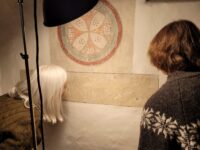 Until now. National Museum of Denmark runologist Lisbeth Imer worked with medieval Danish document expert Anders Leegaard to translate the second line. It reads: “2. May in the year of salvation 1210.” That means Toke’s loan from Ragnhild was dated, and that makes the inscription a legally enforceable document, unique on the Danish archaeological record and extremely rare internationally. Only three similar examples are known: a road use contract on a parish church on Gotland, Sweden, a land sale on a wall in St. Sophia Cathedral in Kyiv, Ukraine, and a judgement on a debt case in the church of Saint Panteleimon in Galich, Russia.
Until now. National Museum of Denmark runologist Lisbeth Imer worked with medieval Danish document expert Anders Leegaard to translate the second line. It reads: “2. May in the year of salvation 1210.” That means Toke’s loan from Ragnhild was dated, and that makes the inscription a legally enforceable document, unique on the Danish archaeological record and extremely rare internationally. Only three similar examples are known: a road use contract on a parish church on Gotland, Sweden, a land sale on a wall in St. Sophia Cathedral in Kyiv, Ukraine, and a judgement on a debt case in the church of Saint Panteleimon in Galich, Russia.
Corresponding legal documents are typically only preserved on parchment and from the very highest social strata – often only because they are found preserved in a younger copy. The new discovery shows that there was a widespread writing culture in the Middle Ages.
“Until now, we have had almost no knowledge of how agreements were made, or to what extent writing was used. Our knowledge of it has, so to speak, been in the dark, and there have been only a few and scattered testimonies about the use of writing. The inscription in Sønder Asmindrup shows that written agreements were made among what we must believe were ordinary farmers at an early stage in the Middle Ages – we simply did not know that before,” says Lisbeth Imer.
 It’s also a unique testament to how commoners in a rural parish crafted legal contracts comparable to the kind of work done by professional scribes for the elites. The promissory note was in two writing systems with Roman date suggests it was authored by someone educated in at least two languages. This was likely the priest or other clergyman associated with the parish church.
It’s also a unique testament to how commoners in a rural parish crafted legal contracts comparable to the kind of work done by professional scribes for the elites. The promissory note was in two writing systems with Roman date suggests it was authored by someone educated in at least two languages. This was likely the priest or other clergyman associated with the parish church.
At court, people usually wrote in Latin and with letters, while church inscriptions are mainly written in the mother tongue and with runes. And where the king’s documents almost all have to do with the state’s interests, the inscription in Sønder Asmindrup deals with ordinary farmers out in the countryside.
“Precisely that makes it so interesting, because it shows that writing was probably more used and widespread than we have otherwise thought. The promissory note is a serious use of writing, it wasn’t just a name scrawled on the wall for fun. It shows that a fairly advanced use of writing also took place out in the countryside, and it is not something we have seen such good examples of before,” says Lisbeth Imer.
